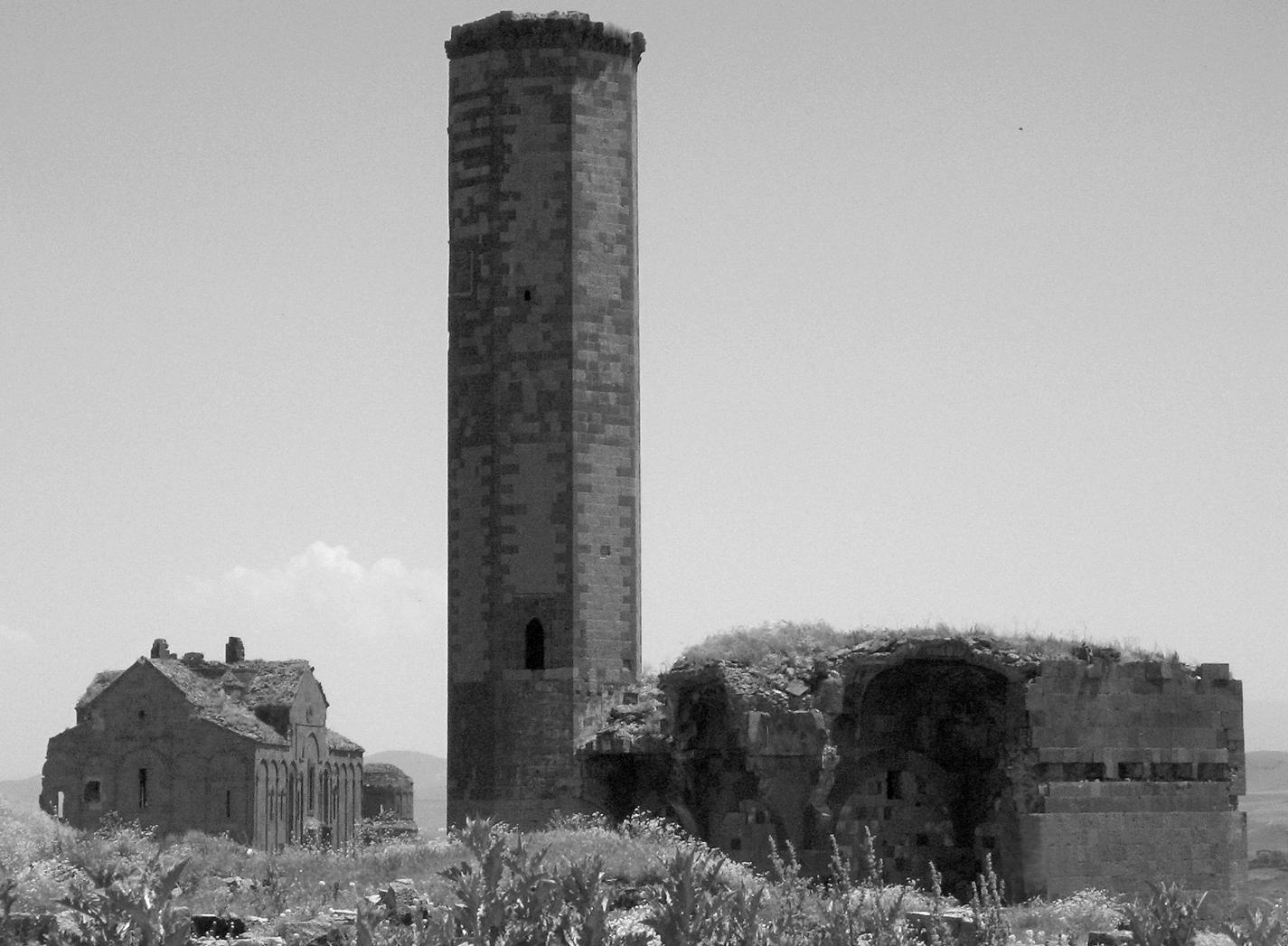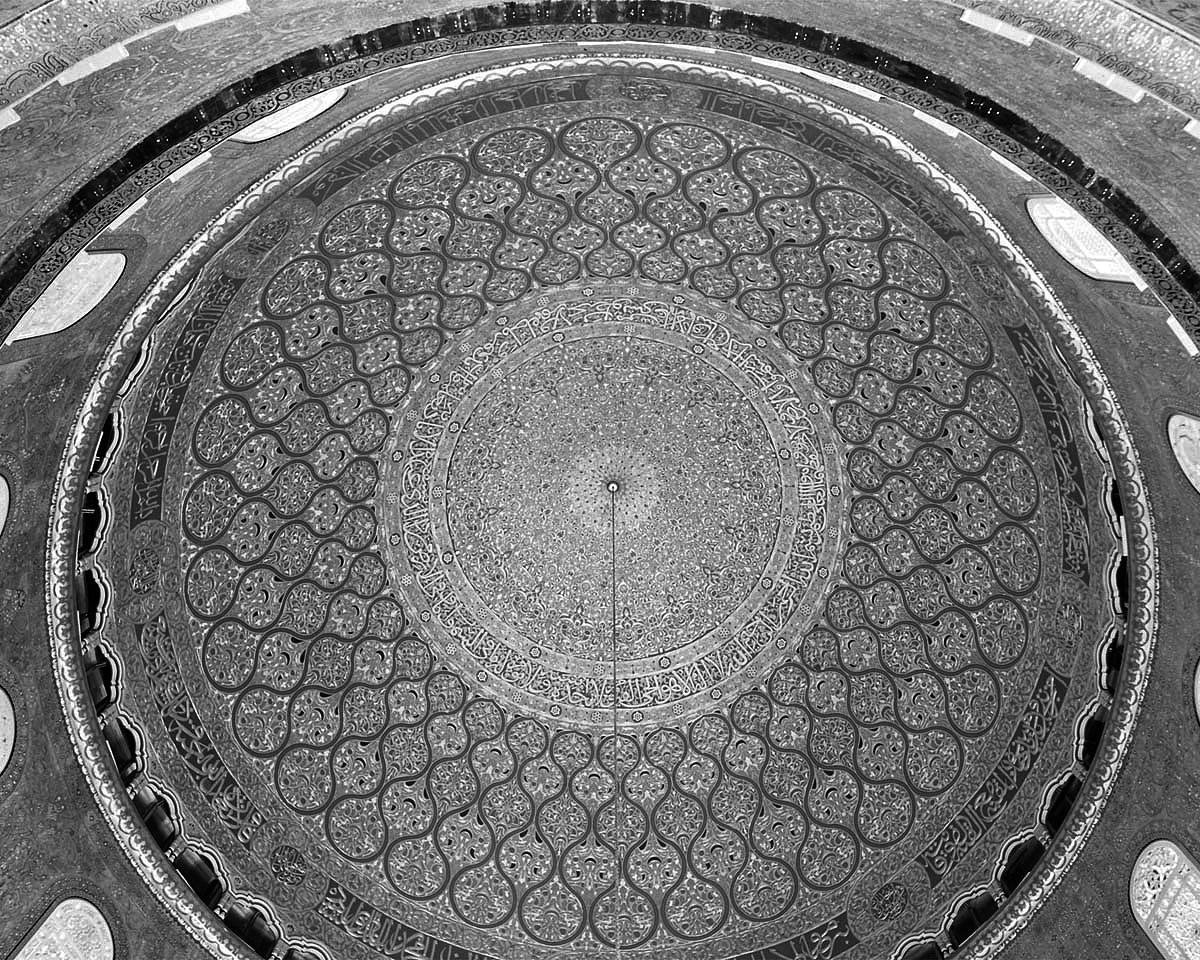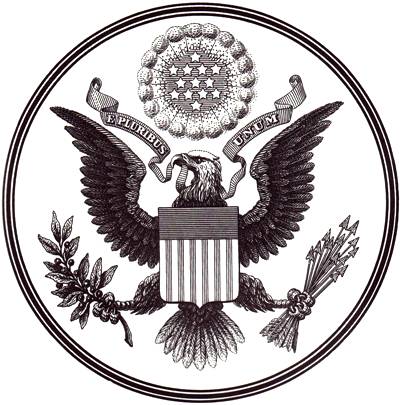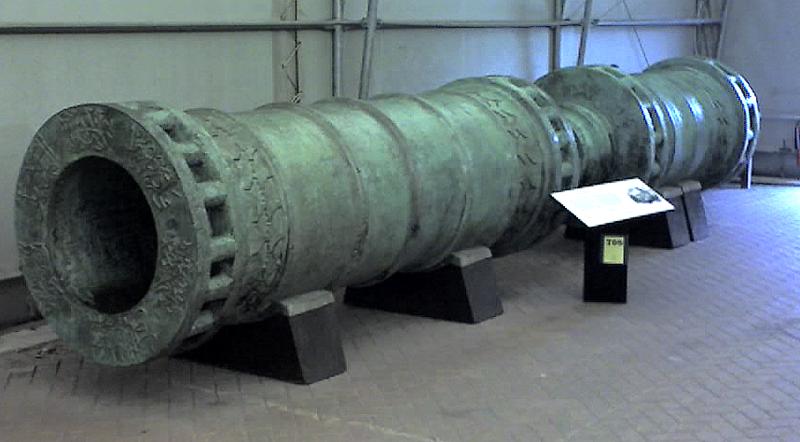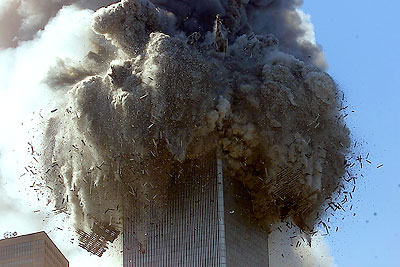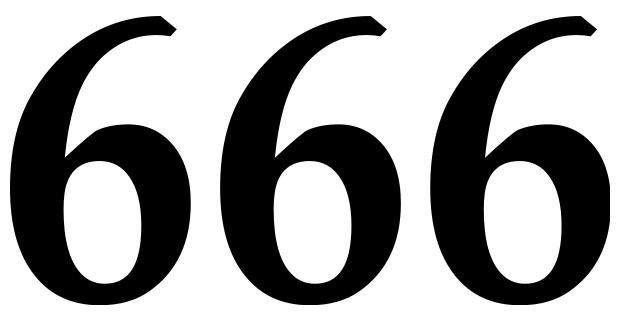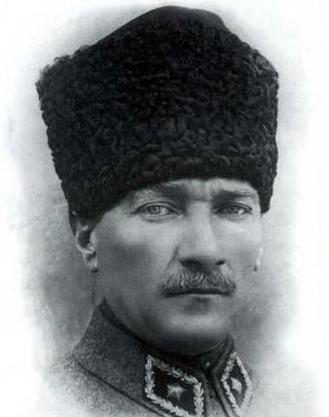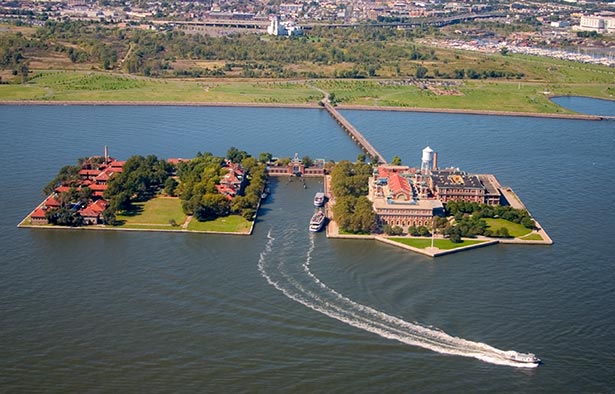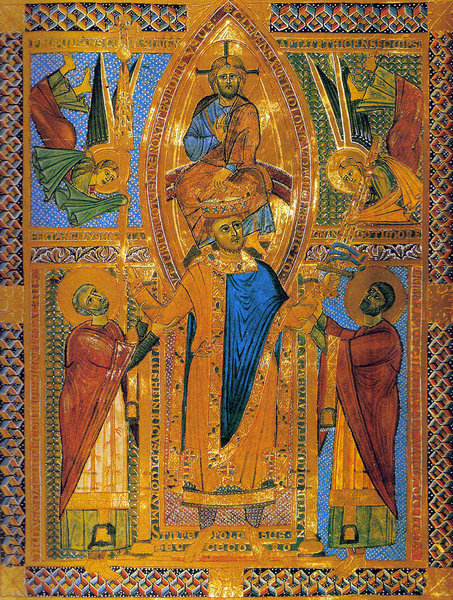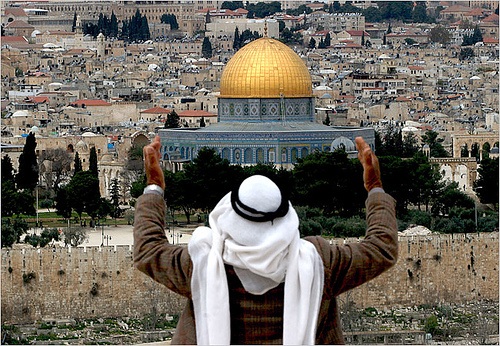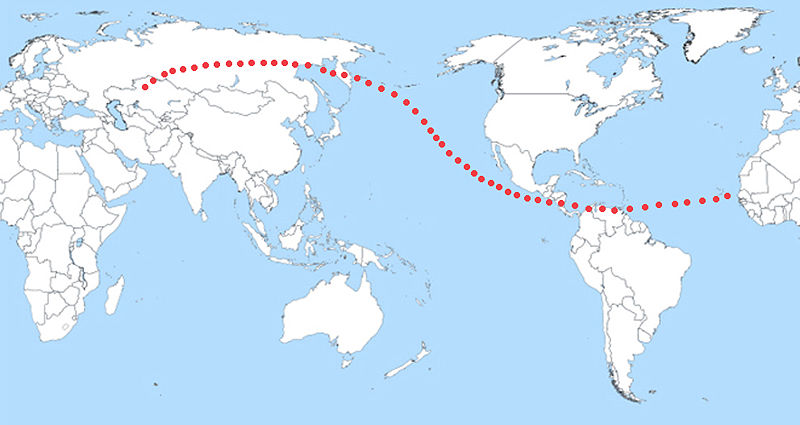Brothers and sisters, the Holy Spirit has guided you here. This is the only place in the world with the answer to the most enigmatic time-period passages in the Bible:
- the 666 of
Revelation 13:18 - the 1290 Days
of Daniel 12:11 - the 1335 Days of
Daniel 12:12 - the 42 Months of Revelation 13:5
- the 70 Weeks
of Daniel 9:24 - the 1260 Days of
Revelation 12:6 - the 5 Months of
Revelation 9:5 - the 1000 Years of
Revelation 20:2 - the 10 Days of
Revelation 2:10 - the 601 Years
of Genesis 8:13 - the 1 Hour of
Revelation 18:10 - the 3.5 Days of
Revelation 11:9
These and other Bible verses all point to Jesus' glorious return to earth in 25 years.

Glossary
Abaptist — An epithet that I have coined for heterodox Reformed Evangelical Protestants for whom infant baptism has been deferred, and who then neglect to get baptized in adulthood because they consider themselves already saved by means of praying the sinner’s prayer at an altar call. They think of baptism as a symbolic, take-it-or-leave-it, statement of faith, rather than a mechanism by which God bestows His grace upon us (i.e., a sacrament). Every breath they take is a deliberate rebellion against Christ’s Great Commission (Matthew 28:19–20).
Abomination that Causes Desolation — The establishment of Ali’s dream of an Islamic religion, symbolized by the Antichrist inscriptions on the gilded Dome of the Rock. Also symbolized by the Antichrist currency reforms completed by Caliph Abd al-Malik in AD 699—exactly six hundred and sixty-six years after the dispersal of the Pentecostal Church from Jerusalem (Revelation 13:18), and exactly twelve hundred and ninety years after the taking away of the perpetual sacrifice from the First Temple (Daniel 12:11). See Temple (false third); also see Mark of the Beast—Could Not Buy or Sell.
al-Malik, Abd — The seventh major caliph, and seventh head of the Seven-Headed Sea Beast (Revelation 13:1). He built the Dome of the Rock between AD 692–AD 699, exactly six hundred and sixty-six years after Christ’s earthly ministry (Revelation 13:18), and instituted Islam with his inscriptions on it (Daniel 12:11), and with his issuance of an Islamic currency (Revelation 13:16–17).
Alawite — An offshoot sect of Shi’a Islam that most Muslims consider outside the bounds of the Islamic religion. They are ultra-devoted to Ali, and were sent by him into his enemy Muawiyah’s territory in Syria. They remained in Syria as an oppressed minority until the ‘Corrective Revolution’ of AD 1970 brought the secular Alawite, Hafez al-Assad, to power.
Ali — Ali ibn Abi Talib, the cousin, step-son, and son-in-law of the Prophet Muhammad. He was the first male convert to Muhammad’s teachings, and was an early warrior for Muhammad’s struggle. He became the fourth caliph and head of the Shi’a branch of Islam. He is both the Son of Perdition (2 Thessalonians 2:3), and the [fourth] head of the Seven-Headed Sea Beast (Revelation 13:1) that was mortally wounded and symbolically healed (Revelation 13:3). His assassination occurred exactly six hundred and sixty-six years after Christ’s Incarnation—giving birth to Islam as we know it (Revelation 13:18).
Allah—The devil (as when the word is used in the Qur’an) who gave the Antichrist Beast of Islam its power (Revelation 12:2–4). See Dragon, Serpent, and Termagant.
American Dichotomy — The two incongruous eschatological roles of the United States; it is both the Great Eagle that protected the Church, and the Great Harlot that polluted the world’s morals. As evidenced in the Culture Wars (Revelation 12:14, 17:1–3; Zechariah 5:5–11). See Wilderness (positive meaning) and Wilderness (negative meaning).
Anabaptist — A number of heterodox Reformed Protestant sects that believe that a person must be baptized as an adult after the ‘age of accountability’—usually by immersion. They are non–creedal, and are particularly susceptible to the deceptions of Dispensational Premillennialism and the antichrist teachings of ‘Christian’ Zionists.
Anti–Chalcedonian—Both the Nestorian and Oriental Orthodox (Monophysite) churches that do not accept that Jesus Christ was one undivided Person, but with the separate nature/will of God and the separate nature/will of man. They do not accept that the Christ was subject to sin, or that He suffered indignities that were against His [human] will. They fell away from Christian orthodoxy after the third and fourth ecumenical councils, respectively (2 Thessalonians 2:3).
Antichrist — Any human being or institution that denies that Jesus is the God–man (2 John 7), but especially the Antichrist Beast of Islam (or the Cult of Muhammad) that Caliph Ali initiated and Caliph al-Malik institutionalized.
Anti–Filioqueanism — An epithet I have coined for the Eastern Orthodox and Oriental Orthodox churches that do not accept that the Holy Spirit proceeds from both the Father and the Son (as is clearly taught in John 16:7, 20:22). The Eastern Orthodox objected to the insertion of the Filioque into the Nicene Creed by the western Church; they built a false doctrine around this stance, and fell away from Christian orthodoxy in the eleventh century—immediately before the Seljuk Turks’ conquest of Greek and Armenian Anatolia (2 Thessalonians 2:3).
Arianism — The antichrist heresy that taught that Christ was not true God, but that He and the Holy Spirit were created by God the Father—an assault upon the doctrine of the Trinity. Condemned by the first two ecumenical councils in AD 325 and AD 381. The Nicene Creed was formulated to combat Arianism. The heresy was founded and named after Arius of Alexandria, who died of an abdominal hemorrhage while sitting on a Constantinopolitan public toilet in AD 336.
Ataturk, Mustafa Kemal — Ruthless Ottoman general, alcoholic, and sexual deviant; founder and dictator of the Republic of Turkey from AD 1923 to AD 1938. God used him to end the power of the Caliphate through the AD 1921 Turkish Constitution—one thousand two hundred and sixty years after the inception of the Muslim religion in AD 661 (Revelation 12:6, 13:5).
Athanasius — Patriarch of Alexandria and tireless champion of Nicene Christianity. Opponent of Arius’ Anti–Trinitarian heresy. The Athanasian Creed is named in honor of him.
Babaiism — An epithet that I have coined for the false christological formula whereby Christ is said to be one Person, but with two souls (or essences), two wills, and two natures. Put forward by Babai the Great, who had a lasting effect upon the Assyrian Church of the East. This doctrine is condemned by all other Christian churches, but is especially noxious to the Syriac Orthodox Church, which is Monophysite.
Babylon the Great—The Twin Towers of the World Trade Center in New York City (Revelation 18).
- Fall of — The attacks by the Antichrist Beast of Islam in AD 2001 (Revelation 18:2).
- Never Shine Again — Indication that the Twin Towers would be damaged beyond repair (Revelation 18:21–23).
- One Day (plagues will overtake her) — September 11, AD 2001 (Revelation 18:8).
- One Hour (brought to ruin in) — The time between the attacks and the collapse of the World Trade Center towers in New York City—one hundred and two minutes for the North Tower, and the fifty-six minutes for the South Tower (Revelation 17:12, 18:10,19).
Baptism (Holy) — A Christian ceremony in which an ordained minister of the Word (i.e., a priest) applies water (either by sprinkling, pouring, or immersion) onto a prospective Christian in the name of the Father, and of the Son, and of the Holy Spirit. This may be done at the person’s request, or at his or her legal guardian’s request. Holy Baptism mysteriously results in the forgiveness of the individual’s sins, and in he or she gaining trust in the Lord Jesus (Mark 16:16; John 3:5; 1 Peter 3:21). It is a means by which God bestows His grace (i.e., a sacrament). At the same time it does not necessarily guarantee salvation—if the baptized person later chooses to reject the Christian faith that they mysteriously received at Holy Baptism, he or she will surely go to Hell. The ceremony is usually performed in infancy (for the forgiveness of the child’s original sin), but may also be done later for those that were not raised in orthodox Christian households (Matthew 28:19).
Bear — Represents the Medo–Persian Empire (539 BC–334 BC; Daniel 7:5).
Beast (from the land) — Islam as sustained by the Oghuz Turks. These people originated from the Atlai Mountains in the land mass of Central Asia (Revelation 13:11).
- Two Horns—The Seljuk Empire (AD 1055–AD 1327) and Ottoman Empire (AD 1299–AD 1922).
- Exercised All the Authority (of the first beast on his behalf)—Refers to the Turks’ assumption of the Caliphate, and reinvigoration of Islam during and after the Crusades (Revelation 13:12).
- Fire to Come Down—Symbolizes the Turks’ early use of gundivowder (Revelation 13:13).
- Image (that could speak in honor of the Beast)—The minarets built by the Turks, from whence the Muslim call to prayer proceeds five times per day, everyday (Revelation 13:14–15).
Beast (from the sea) — The religion of Islam, as established by the seventh century Arabs. They originated from the Mediterranean/Red Sea region (Revelation 13:1).
- Seven Heads — The first seven major Caliphs of the Arab Empire. They ruled between the time of Muhammad’s death in AD 632 and the sending forth of Islamic orthodoxy from Jerusalem in AD 699 (Revelation 13:1).
- Name of Blasphemy (upon the seven heads) — ‘Muhammad’ who rejected the Trinity, the Incarnation, and the Easter-Resurrection. He taught that Jesus was a messenger, or prophet, or apostle, or slave of Allah, rather than the Son of God. He is praised five times per day by every pious Muslim as “the Prophet of God” (Revelation 13:1,6).
- Mark of — See Mark of the Beast.
- Number of — See Number of the Beast.
- Ten Horns — The lands that Muslims conquered and held, including Syrio–Phoenicia, Palestine–Transjordania, Mesopotamia, Egypt, Cyrene, Persia, Armenia, Carthage–Tripolitania, Mauretania–Numidia, and eventually the entirety of Asia Minor (Revelation 13:1).
- Eyes of a Man — Reference to the large number of Muslims, and to their covetousness and lawlessness (Daniel 7:8).
- Healing of Deadly Wound — Arab Empire’s institutionalization (between AD 692 to AD 699) of the martyred Ali’s dream of a new world religion to challenge Christianity (Revelation 13:3).
- Change Set Times — The introduction of the Hijra calendar upon the Arabs’ conquest of Palestine in AD 638. In this dating system, the first year was changed from Christ’s birth to the Hijra (or the flight of Muhammad from Mecca to Medina) in AD 622 (Daniel 7:25).
- Change Set Laws — The Qur’anic and extra–Qur’anic laws that the Muslims have imposed upon their subjects (Daniel 7:25).
Beast (scarlet) — The Scarlet Beast itself represents the recurrence of lawlessness and terrorism, which were the roots of the kingdoms represented by the seven heads before they became established powers. This anarchy will become more prevalent during the Tribulation (Revelation 17:8,11).
- Heads of Beast (that have fallen) — Five great worldly empires that tried to quench God’s plan for salvation: ancient Egypt, Assyria, Babylonia, Medo–Persia, and Greece (Revelation 17:10).
- Head of Beast (that is) — The Roman Empire that crucified the Savior (Revelation 17:10).
- Head of Beast (that has not yet come) — The Caliphate of the Arab Empire (and later the Ottoman Empire) that opposed the saints (Revelation 17:10).
- Little While (that the last head remained) — One thousand two hundred and sixty years of the post–Ali Caliphate (Revelation 17:10, 13:5).
- Ten Horns of Beast — Socialist political and cultural forces in the United States (e.g., the mainstream news media, Hollywood, American Civil Liberties Union, academia, Democratic Party, National Abortion Rights Action League, teachers’ unions, Public Broadcasting Service, etc.). Those that would make a pact with the devil before agreeing to live at peace with the Word of God (Revelation 17:12).
- War with the Lamb — Culture Wars waged in the United States since ~AD 1960 (Revelation 17:14).
- Hatred of the Great Harlot (by the Beast and its ten horns) — The Anti–Americanism and self-destructive tendencies of the socialist political and cultural forces in the United States (Revelation 17:16).
- Agreeing to Give the Beast their Power to Rule — The vulnerable position in which the socialist political and cultural forces left the United States’ defenses—especially during the Clinton Administration (Revelation 17:17).
- One Hour of Authority (along with the Beast) — Symbolic time that the ten horns reigned with the Scarlet Beast during the attacks of September 11, AD 2001—one hundred and two minutes for the North Tower and the fifty-six minutes for the South Tower (Revelation 17:12).
- Will Ascend Out of the Bottomless Pit — The rise of terrorist anarchy and chaos in the last days (Revelation 17:8).
Beast (terrifying and frightening) — Represents the Roman Empire (27 BC–AD 1453; Daniel 7:7).
Benz, Karl — Inventor of the automobile in AD 1886, and father of the age of automated transportation. His invention is called ‘locusts’ by the Apostle John (Revelation 9:3).
Byzantine Empire — A name coined by a German historian in the nineteenth century to describe the Eastern Roman Empire between AD 476 and AD 1453. The word ‘Byzantine’ would have been unknown to the rulers and citizens of the Eastern Roman Empire. They thought of themselves as the intact portion of the Roman Empire (Daniel 7:7). Synonymous with ‘Beast (terrifying and frightening).’
Caliphate — The kingdoms of the one hundred successors of Muhammad that ruled the Arab and Ottoman Empires from AD 632 to AD 1921 (Revelation 13:5,12).
Chalcedonianism — The correct Christology whereby Jesus is said to have two natures (i.e., fully divine and fully man) and two wills (i.e., fully divine and fully human) in one undivided Person and one undivided Soul (or essence). Affirmed at the fourth ecumenical council in AD 451, and reaffirmed at the fifth ecumenical council in AD 553 and the sixth ecumenical council in AD 680. Accepted by the Roman Catholics, Protestants, and Eastern Orthodox; rejected by heretical churches of the Oriental Orthodox (Monophysite) Communion, as well as the few remaining Nestorians.
Chosen People — Creedal Christians; anyone that trusts that God loves us enough to have become a man in Jesus of Nazareth. Also, known as the True Israel, Spiritual Israel, Children of Israel, Israel of God, Remnant, Children of Promise, Apple of God’s Eye, the Head and Not the Tail, an Acceptable People, a Blessed People, God’s Children, People of the New Name, People of God, Elect, and the Church (Galatians 3:7, 3:29, Ephesians 3:6). See Christian, Christian Church, Israel (of God), Protestant (Confessional), Roman Catholic, Temple (true third), Two Witnesses, Woman (clothed with the sun), and Yahwism.
Christian — Any person that entrusts his or her soul to the care of Jesus Christ, the God–man, and is baptized with water in the name of the Father, and of the Son, and of the Holy Spirit (Mark 16:16). This is the new name of the People of God (Isaiah 56:5; Isaiah 62:2; Isaiah 65:15; Acts 11:26). See Chosen People, Christian Church, Israel (of God), Protestant (Confessional), Roman Catholic, Temple (true third), Two Witnesses, Woman (clothed with the sun), and Yahwism.
Christian Church — The invisible, indivisible, Body of Christian believers that accepts and confesses the three Ecumenical Creeds (with the Filioque). The Bride of Christ (Ephesians 5:23,31–32; Revelation 21:2). See Chosen People, Christian, Israel (of God), Protestant (Confessional), Roman Catholic, Temple (true third), Two Witnesses, Woman (clothed with the sun), and Yahwism.
‘Christian’ Zionism — An antichrist cult that maintains that ethnic or ‘natural’ Jews do not need to accept Jesus Christ into their hearts in order to be temporally or eternally blessed because God favors them above the rest of humanity (Galatians 4:17; Jude 4). See Dispensationalism, Premillenialism, and Über-Baptist.
Christology — The particulars of how God became a man in Jesus, best explained in the Athanasian Creed. Accepting the proper Christology (i.e., Chalcedonian and Filioquean) is vitally important to individuals and nations.
Church of the Emasculated Christ — See Protestant (Mainline) and Seven Sisters.
Church of the Holy Sepulchre — A church built over the sight of Christ’s empty tomb in Jerusalem. Construction was begun by Emperor Constantine in AD 336. The building was partly burned by a Muslim mob in AD 966, and completely destroyed by Caliph al-Hakim in AD 1009—an act of vandalism that precipitated the Crusades.
Confirm a Covenant (with many) — An angelic prophecy made in 539 BC that the Messiah’s earthly ministry would be to a large number of Jews and would last for three and a half years—beginning with His anointing in AD 26 (Luke 3:21–22). At the end of this period He would, “…put an end to sacrifice and offering…” [Daniel 9:27, NIV] through the institution of Holy Communion (Matthew 26:26–28) and the sacrifice of Himself as the Lamb of God (Matthew 27:50). Afterward, the resurrected Messiah would protect His Christian Church in Jerusalem for another three and a half years. This seven year period ended with the stoning of St. Stephen in AD 33 (Acts 8:1,4).
Creeds (three proper, Christian, Ecumenical) — The Apostles’, Athanasian, and Nicene (with inclusion of the Filioque) Creeds that define the Christian religion (1 Timothy 4:16; Titus 2:1).
Culture Wars — The relentless struggle by Liberals since ~AD 1960 to oppose the Gospel, and to wrest control of the American national identity from the Christian Church. Waged through judicial activism, feminism, hedonism, liberal media bias, and the cult of science (2 Timothy 3:1–5; Revelation 12:15; 17:14). See American Dichotomy.
Dispensationalism — The heretical belief that God deals with different groups of human beings by different methods (or economies) during different periods (or dispensations) of human history. They maintain that the Bible shows God testing and making covenants with these groups during seven distinct dispensations (e.g., Patriarchal, Mosaic, Church, etc.). They say that these groups received different promises from God. The covenants are racially-based, rather than contiguous to all God-fearing believers throughout the ages. They therefore make a strong differentiation between the Israel of God in the Old Testament and the Church of God in the New Testament. Today’s Jews are [supposedly] irrevocably entitled and destined to receive the promises that God [supposedly] made to Abraham on their behalf. The Jews are said to enjoy God’s protection regardless of their response to Christ’s Gospel, and to have a separate, favored, prophetic track as His [supposed] Chosen People. The fulfillment of God’s promises to them will [supposedly] occur after the close of the ‘provisional,’ Church, era—during Christ’s [supposed] thousand year bodily rule from this earth’s Jerusalem. In this way, Dispensationalism is a form of Premillennialism that views the Christian Church as a ‘parenthesis’ in God’s larger plan for the Jewish race. [In contrast to this disjointed view of God’s dealings with men, I provide a harmonious layout of Biblical history, as well as a systematic defense of God’s racial impartiality.] The Dispensationalists clearly have an inferiority complex when comparing their spiritual state to that of ethnic or ‘natural’ Jews, and as a consequence, their eschatology is full of red herrings: They eagerly anticipate a ‘rapture’ of all Christians seven years before the Second Coming of Christ. This is said to be followed by a mass conversion of Jews to Christianity and an intense persecution of that new, post–rapture, Church. Dispensationalist-thought is fueled by their misinterpretation of the last ‘week’ in the Daniel 9:20–27 prophecy. Dispensationalism was introduced by the Anglo–Irish evangelist, John Darby, and popularized with the publication of the Scofield Reference Bible in AD 1909. The doctrine’s home base is a denomination called the Plymouth Brethren, but its basic tenets are widely held among Anabaptist sects, and are fashionable among American Evangelicals and ostensibly non–denominational churches. Dispensationalists view the twentieth century establishment of a Jewish state in Palestine as divine validation of their message. They believe that it is every Christian’s duty to work toward complete Jewish restoration—including the construction of a new Jewish Temple in place of the Dome of the Rock. See ‘Christian’ Zionism, Premillennialism, and Über-Baptist.
Dome of the Rock — The earliest Muslim religious shrine. Built between AD 692 and AD 699 on the Temple Mount in Jerusalem. It is not a mosque, but a monument to Islam’s triumph over eastern Christendom. Its interior and exterior arcade inscriptions constitute the ‘Abomination that Causes Desolation’ (Daniel 12:11). See Temple (false third).
Dragon — The devil, known by many non–Trinitarian names including ‘Allah’—as when ‘Allah’ is used in the Qur’an, but not when it is used in the Arabic Christian Bible (1 Corinthians 10:20–21; Revelation 12:3). See Allah, Serpent, and Termagant.
- Persecuted the Woman, and War with Her Offspring—Worldwide persecution of Christians currently taking place (Revelation 12:13,17).
- Spewed Out of His Mouth (like a flood)—The myriad of lies that collectively work to keep people from coming to a knowledge of God, and that distort objective truth—especially during the Culture Wars (Revelation 12:15–16).
Eastern Orthodox — A heterodox branch of Christianity that, although Chalcedonian, refuses to accept and profess that the Holy Spirit proceeds from both the Father and the Son. These churches are against the inclusion of the Filioque in the Nicene Creed. They incorrectly conceptualize the Persons of the Holy Trinity as being in a hierarchical relationship, and they imagine that human beings go through a process of ‘deification’ during their Christian walk (as opposed to the correct view of sanctification). They include the national churches in Greece, Bulgaria, Serbia, Romania, Georgia, Russia, Belarus, and Ukraine.
Eastern Roman Empire — Begun when Emperor Diocletian split the Roman Empire into two parts to make it more manageable. It was the sole remaining part of the Roman Empire after the deposition of Romulus Augustus from Rome and the dissolution of the Western Roman Empire in AD 476. The Eastern Roman Empire’s capital of Constantinople was known as ‘New Rome.’ It was finally conquered by the Ottomans (i.e., the second horn of the Land Beast) in AD 1453—thus extinguishing the Roman Empire (Daniel 7:7–8). Synonymous with ‘Beast (terrifying and frightening).’ See Byzantine Empire.
Ecumenical Councils — A series of early councils held by Christian bishops from around the world in which Christian orthodoxy was established. The seven ecumenical councils were: the First Council of Nicaea in AD 325; the First Council of Constantinople in AD 381; the Council of Ephesus in AD 431; the Council of Chalcedon in AD 451; the Second Council of Constantinople in AD 553; the Third Council of Constantinople in AD 680; the Second Council of Nicaea in AD 787.
Edict of Milan — Law removing penalties for professing Christians in the Roman Empire. Issued by Emperor Constantine in AD 313.
End Times — The period between the Ascension of Christ and the Second Coming of Christ (1 John 2:18). The final two thousand years of the six thousand year world history. The ‘Encore’ and ‘Finale’ of the Divine Idiom.
Eschatology — The branch of theology that is concerned with the Second Coming of Christ and the end of the world. In this book I espouse a new, date specific, formulation of Postmillennialism.
Falling Away — The Nestorian (AD 428–AD 431), Monophysite (AD 451–AD 728), and Anti–Filioquean (AD 589–AD 1054) schisms of the eastern churches from Christian orthodoxy. Subsequent to the arrival of these heresies, there was a forced conversion of many of their adherents to the Son of Perdition’s religion, Islam (2 Thessalonians 2:3).
False Prophet — Rationalism, or Naturalism, or Liberalism, or Modernism, or Evolutionism. Any human being or institution that believes that scientific discovery leads to metaphysical truth. The secular Anti–Christian forces of the Cult of Science (Mark 13:22; 1 Timothy 6:20–21; Revelation 16:3; 19:20).
Filioque — Latin for and the Son’ especially when included in the Nicene Creed clause about the procession of the Holy Spirit (John 16:7).
Filioqueanism — A moniker I have coined for the biblically-correct belief that the Holy Spirit proceeds from God the Father and God the Son (John 20:22). The proclamation of this truth by adding ‘and the Son’ into the Nicene Creed, just as it is in the Athanasian Creed. Begun in AD 589 at the Council of Toledo and accepted by the Roman Catholic Church in AD 1014.
Forty-Two Months — The prophesied time during which the post–Ali Islamic Caliphate will control Jerusalem (Revelation 11:2) and flaunt their blasphemous authority (Revelation 13:5). Faithful Christians bore witness against the Caliphate during forty-two periods of thirty years each, or the 1,260 years between the conception of the Beast of Islam (with Ali’s assassination in AD 661), and the Caliphate’s permanent loss of power (with the Turkish constitution of AD 1921). See Two Witnesses and ‘One Thousand Two Hundred and Sixty Days (years).’
Gnosticism — A first and second century antichrist heresy in which all matter was thought to be evil. The Docetic variant of Gnosticism taught that Christ only appeared to become a man, and only appeared to suffer and die—an assault upon the Incarnation. The Gnostics maintained that salvation came not from faith in the Resurrected Christ, but from escaping the confines of our physical bodies through a special spiritual knowledge (as in Buddhism). The Apostles’ Creed was designed to combat Gnosticism.
Gog and Magog — Symbolizes all the nations that will join together to attack God’s people during the Tribulation (Revelation 20:7–10). Before the battle can even begin, this evil infantry will be stopped by a holocaust (probably a nuclear missile) from the sky (Revelation 9:14–19).
Great Eagle — The United States of America in its role as the refuge for the Christian Church during the Cold War. A reference to the US national symbol during the great immigration wave of Christian peoples that ended with the Emergency Quota Act of AD 1921 (Revelation 12:14).
Great Harlot — The United States of America in its role as the corruptor of the world’s culture and spreader of Rationalism. Specifically, the liberal American culture that is headquartered in New York City (Zechariah 5:5–11; Revelation 17:18).
- Sits on Many Waters — New York Harbor where immigrants from around the world arrived (Revelation 17:1,15).
- Wine of Her Fornication (earth made drunk with) — The export of American music, movies, and moral degradation (Revelation 17:2).
- Arrayed in Purple and Scarlet — Representative of western prosperity (Revelation 17:4).
- Drunk With the Blood of the Saints — An acknowledgement that the prosperity that allowed the Great Harlot to live in debauchery was the spiritual result of the sacrifice of martyred Christian saints (Revelation 17:6).
- Riding (upon the Scarlet Beast) — Represents how modern American Liberalism is riding upon the antichrist legacies of ancient Egypt, Assyria, Babylonia, Medo–Persia, Greece, Rome, and the Caliphate. These are the seven heads of the Scarlet Beast that have a historic hostility toward God’s salvation plan (Revelation 17:7–11).
Gutenberg, Johannes — Inventor of the printing press and first mass-printer of the Bible. His initial work on the Word of God is the same amount of time after Christ’s birth as Moses’ initial work on the Word of God is before Christ’s birth (i.e., 1456 years).
Hadith — The extra–Qur’anic reports of the sayings of Muhammad.
Hajj — The annual pilgrimage of Muslims to Mecca. One of the five pillars of Islam.
Henry II — The Saxon Holy Roman Emperor that asked that the Nicene Creed be recited with the inclusion of the Filioque during his coronation Mass in AD 1014. The Pope obliged him. This was the first time that the Roman Catholic Church officially endorsed the Filioque. It led to the Great Schism of AD 1054, but also ushered in the Millennial rule of the saints with Christ (Revelation 20:4).
Heraclius — The seventh century Eastern Roman Emperor whose incompetent hundred year dynasty paved the way for the Antichrist Beast of Islam.
Hijra — The flight of Muhammad from Mecca to Medina in AD 622. Marks the beginning of the Islamic calendar.
Iconoclasm — A heresy that prohibits images of Jesus Christ on the grounds that they are idolatrous—an often-employed trick of the devil to deny the historical reality of the Incarnation. When the Eastern Roman Empire issued coins with a full-face image of Christ, the Arab Caliphate took iconoclastic offence and began to mint an Antichrist-inscribed currency (in AD 692). This occurred exactly six hundred and sixty-six years after the commencement of Christ’s ministry. Iconoclasm was condemned at the seventh ecumenical council, which held that such images are useful objects of adoration (but not worship). See Triumph of Orthodoxy.
Incarnation — The miraculous phenomenon in 6 BC whereby the eternal and omnipotent Person of the Holy Trinity, God the Son, became a male being inside the womb of the blessed virgin Mary (Luke 1:30–35). God took humanity into Himself at that moment. One divino–human Person with one divino–human Soul was born as Jesus Christ. He had the separate nature of God and the separate nature of man; He also had the separate will of God and the separate will of man. He was subject to sin, tempted as a man is tempted, and destined to three days of decay. Yet He had no sin and was raised from the dead on the third day.
Islamism — The Antichrist religion of the Son of Perdition, Ali. It is the Beast of Revelation 13, as well as the boastful horn of Daniel 7. Islam’s two main branches are the Shi’a and Sunni—the sempiternal enemies of Christianity. They emphatically reject the Crucifixion, Resurrection, and the Messiahship of Jesus of Nazareth. See Beast (from the sea), Beast (from the land), and Abomination that Causes Desolation.
Israel (of God) — Any human being or group of human beings that trust that God became a man according to the Old Testament prophecies. Today’s Creedal Christians, about whom God made the promise to Abraham (Genesis 13:14–17; Galatians 3:29). See Chosen People, Christian, Christian Church, Protestant (Confessional), Roman Catholic, Temple (true third), Two Witnesses, Woman (clothed with the sun), and Yahwism.
Israel (modern State of) — A secular parliamentary democracy in the eastern Mediterranean that is almost entirely populated by non–Christians. Many of its citizens are descended from Jesus near-kin, but this is of absolutely no spiritual benefit or eschatological significance.
Jew (as ethnicity) — An ethno-religious group largely descended from the patriarch Jacob. Approximately fourteen million in number—residing mostly in the United States and the State of Israel of whom ~ninety-nine percent are not of the Christian faith (John 1:11; Ezekiel 22:18). A people that God loves as much as He loves every other people, but not more (Hosea 1:10; Isaiah 19:25, 56:3; John 1:12).
Jew (as Old Testament religious title) — The old name for the Israel of God, or the old name for the pre–Christ Church that trusted that God would become a man in accordance with Old Testament prophecy (Isaiah 65:15; Zechariah 8:23). See Yahwism.
Judaism (Rabbinic) — A group of antichrist sects that adhere (to varying degrees) to Jewish religious customs, but that specifically reject the Messiahship of Jesus of Nazareth (Revelation 2:9, 3:9). It is not to be confused with Yahwism—the pre–Christ religion of the Old Testament.
Karbala (Battle of) — The quixotic campaign by Ali’s second son and heir, Husayn, to gain control of the Arab Empire in AD 680. He and his seventy-one followers were slaughtered by a Sunni force of four thousand led by Caliph Yazid. The event is remembered each year by Shi’a through self-flagellation on the Day of Ashura.
Kharijite — An offshoot sect of Sunni Islam. Its members assassinated Caliph Ali and attempted to assassinate his rival and successor, Muawiyah. They are ultra-devoted to the Qur’an and believe in killing infidels with impunity. At the end of the seventh century they rebelled against Caliph al-Malik in Iraq and were crushed. A dormant branch of the Kharijites form the majority in the modern Sultanate of Oman.
Khoja, Nasr-ed-Din — A wiseman and jester in the court of Tamerlane. He lived southwest of modern Ankara, Turkey. His name means ‘Master’ or ‘Teacher’.
Knowledge Shall Increase — A prophecy that the end of the world would come shortly after the advent of the Information Revolution (Daniel 12:4).
Leopard — Represents the Grecian Empire (334 BC–30 BC ) begun by Alexander the Great (Daniel 7:6).
Levant — An imprecise geographic area, roughly south of the Taurus Mountains, north of the Red Sea, east of northern Egypt, and west of the Arabian Desert and Euphrates River. Encompasses modern Lebanon, Syria, Israel, West Bank, Jordan, and the Sinai.
Lion — Represents the Babylonian Empire (626 BC–539 BC; Daniel 7:4).
Little Horn — The Caliphate, or Arab Muslim Empire (and later the Seljuk and Ottoman Empires). The historical dates are AD 632–AD 1924, but the effective dates for Islamic religious rule are the one thousand two hundred and sixty years between AD 661–AD 1921 (Daniel 7:8; Revelation 11:2–3, 12:6, 13:5). Synonymous with the ‘Beast (from the sea)’, and later the ‘Beast (from the land)’.
- Uprooted Three Horns — The lands and cultures of the Babylonian Empire, Medo–Persian Empire, and Grecian Empire that the Muslims overran (Daniel 7:20,24–25).
Locusts — Automated transportation, especially the automobile powered by the internal combustion engine (Revelation 9:3).
- Bottomless Pit — Oil wells (Revelation 9:2).
- Sun Darkened — Smog (Revelation 9:2).
- Torment (of those without the seal of God) — Spiritually-deleterious effect of oil wealth upon Muslims (Revelation 9:4–5).
- Seeking Death — Desire of Islamists from oil-rich nations to die in jihad (Revelation 9:6).
- Faces of Men — Automobile headlights and grills that look like eyes and teeth (Revelation 9:7).
- Power to Hurt Men for Five Months — Age of the internal combustion engine from Benz’ patent in AD 1886 to AD 2036 (Revelation 9:5,10).
Mahdi — The prophesied redeemer of Islam, or the ‘Muslim Messiah.’ The word means ‘the [Rightly] Guided One,’ and is not mentioned in the Qur’an, but is mentioned in the Hadith. The Muslims believe that the Mahdi will appear shortly before the Judgment Day. They do not say that the Mahdi is the Son of God, but that he will come to rescue them from their troubles and institute Islam across the world. The Shi’a think that the Mahdi is the historic figure, Muhammad al-Mahdi—the boy that was of the twelfth generation from Muhammad (through Ali), and disappeared after his father’s funeral in Samarra, Iraq.
Many Shall Run to and fro — A prophecy that the end of the world would come shortly after the advent of intercontinental air travel (Daniel 12:4).
Manzikert (Battle of) — A pivotal battle in AD 1071 where the incipient Seljuk Empire (i.e., the first horn of the Land Beast) soundly defeated a larger force from the Eastern Roman Empire. Resulted in the permanent loss of Christian sovereignty over Anatolia; this catastrophe was the spiritual consequence of the Greek’s Anti–Filioquean schism (Luke 7:23).
Manzikert (Synod of) — A local council of Armenian Apostolic and Syriac Orthodox bishops in AD 728 which denounced Pope Leo I and Chalcedonianism, and formally embraced the Monophysite heresy. Their canon that Christ’s body was “…neither subject to sin nor destined to decay,” was fundamentally sacrilegious (Matthew 16:21–23). The synod solidified the Oriental Orthodox Communion, but had the spiritual consequence of their near-annihilation by the Antichrist Beast of Islam (Isaiah 42:24–25; Hosea 13:16).
Mark of the Beast — A rug burn on one’s forehead and/or rug calluses on one’s right hand from the observance of Muslim call to prayer (Revelation 13:16).
- Could Not Buy or Sell — The Dhimmi religious caste system in Muslim lands whereby there is an economic disincentive to remain a non–Muslim. First begun with the [Iconoclastic] Islamic currency reforms of AD 692–AD 699 (Revelation 13:17).
Martel, Charles — The French leader whom God used to save western Christendom from being overrun by Muslims at the Battle of Tours in AD 732. His fur-clad rabble were the only armed force between the Antichrist Beast of Islam and the Church that the Apostle Peter founded in Rome (Matthew 16:18).
Mashdots, Mesrop — Inventor of the Armenian alphabet in AD 405, born in Hatsekats, Province of Manzikert. His aim was to spread Christianity. The new alphabet resulted in an Armenian translation of the Bible by AD 434. Exactly six hundred and sixty six years after the completion of his work on the alphabet the Seljuk Turks conquered Anatolia at the Battle of Manzikert (Revelation 13:18; Table 15).
Meaning of Life — To glorify and enjoy the Triune God (1 Corinthians 10:31); to declare faith in the Resurrection of Jesus Christ (John 6:29).
Millennium — The sixth, and final, millennium in human history, approximately from AD 1014 to AD 2014. During this time, the devil has been bound (Revelation 20:2), the Beast of Islam has been on the defensive, and the Church has grown with three proper Ecumenical Creeds. The devil will be released for the last twenty years of history and there will be havoc during the Tribulation—especially in the Middle East and in Muslim countries (Revelation 20:3–4).
Monophysitism — The false christological formula whereby Christ is said to have only one divino–human nature and only one divino–human will. Held by the heretical Oriental Orthodox churches, though they prefer the term ‘Miaphysitism.’ Condemned by the fourth, fifth, and sixth ecumenical councils. This doctrine was the spiritual precursor of Sunni Islam.
Monotheism — Any of a number of antichrist sects that professes one God, but not three Persons, and not the Incarnation. The true religion of the Holy Bible is Nicene Trinitarian Monotheism.
Monothelitism — The false christological formula whereby Christ is said to have two natures (i.e., fully God and fully man), but only one divino–human will. Emperor Heraclius’ Monothelite initiative immediately preceded the advent of the Arab Empire. This heresy was condemned by the sixth ecumenical council in AD 680, but was the doctrine of the Maronite Christians of Lebanon from the seventh century until the Crusades.
Muawiyah — The notorious fifth caliph who fought against Caliph Ali during the first Muslim civil war and assumed control of the empire after Ali’s assassination. Reviled by the Shi’a; reluctantly accepted by the Sunni.
Nestorianism — The false christological formula whereby Christ is said to be two persons with two souls (or essences), two wills, and two natures—essentially a dual personality. Dates to AD 428. Condemned by the third ecumenical council in AD 431. A variation of this heresy was held in the Assyrian Church of the East until AD 1994. Now held only by the tiny breakaway Ancient Church of the East. This doctrine was the spiritual precursor of Shi’a Islam.
Nicene Formulation — The true Christian faith affirmed at the first two ecumenical councils, and promulgated by the Nicene Creed. See Trinitarianism.
Number of the Beast — A series of six-hundred-and-sixty-six-year timelines throughout history in which the devil sought to counteract God’s plan for salvation by establishing his religion of Islam and persecuting God’s people—especially the time between Christ’s incarnation/ministry, and the assassination of Ali/Dome of the Rock project (Revelation 13:18).
One Thousand Three Hundred and Thirty-Five Days (years)—The prophesied time between the gilding of the Dome of the Rock/promulgation of Islamic orthodoxy in AD 699, and the Second Coming of Christ/end of the world in AD 2034 (Daniel 12:12).
One Thousand Two Hundred and Ninety Days (years) — The prophesied time between the taking away of perpetual sacrifices in the Second Temple in 592 BC, and the gilding of the Dome of the Rock/promulgation of Islamic orthodoxy in AD 699 (Daniel 12:11).
One Thousand Two Hundred and Sixty Days (years) — The prophesied time between the conception of the Beast of Islam with Ali’s assassination in AD 661, and the Caliphate’s loss of power with the Turkish constitution of AD 1921. During this period Creedal Christians prophesied in sackcloth (Revelation 11:3) and moved into the wilderness of Europe, the Americas, and Oceania for protection (Revelation 12:6). See Forty-Two Months, and Two Witnesses.
Oriental Orthodox — A heterodox branch of Christianity that refuses to accept that Jesus Christ had two separate natures and two separate wills within one undivided Person. Includes Armenian Apostolic, Egyptian Copt, Ethiopian Tewahedo, Eritrean Tewahdo, Malankara Orthodox, and Syriac Orthodox. See Monophysite.
Pentecostalism — An Anabaptist movement where special emphasis is placed on the baptism of the Holy Spirit and speaking in tongues (as in the Pentecost of Acts 2:1–4). They are non–creedal, and are especially susceptible to Anti–Trinitarian ‘Oneness’ cultism. See Sabellianism.
Premillennialism — The heretical belief that the thousand year reign of Christ, known as the Millennium, will be after His Second Coming. They teach the following eschatological sequence: (1) Christians will be ‘raptured’ to heaven, (2) there will be a mass conversion of new Christians—most notably the Jews within the State of Israel, (3) an Antichrist personality will arise from within the European Union, and there will be an intense period of tribulation, (4) the State of Israel will be attacked by the Antichrist and his allies, (5) Christ will return to rule from the present earth’s city of Jerusalem, and He will throw Satan into a pit, (6) after a thousand years, Satan will be released from the pit and will gather an army to attack Christ in Jerusalem, (7) fire will come down from Heaven, Satan will be defeated and vanquished to eternal Hell, (8) there will be the Judgment Day. The Premillennialists’ obsession with the Jews puts them in danger of falling into the Antichrist cult of ‘Christian’ Zionism. Also, see Dispensationalism and Über-Baptist.
Protestant (Confessional) — The various biblical denomination and churches that have remained faithful to the Gospel message of God becoming a man. The Israel of God that is Chalcedonian, Filioquean, and in all other indispensable respects Christ-centered and Bible-based. See Chosen People, Christian, Christian Church, Israel (of God), Temple (true third), Two Witnesses, Woman (clothed with the sun), and Yahwism.
Protestant (Mainline) — Heretical liberal churches that have many ordained ministers and communicant members that deny the divinity and/or the manhood of Jesus. Especially, but not limited to, the Seven Sister denominations (1 Timothy 4:1).
Rapture — The false teaching of Dispensational Premillennialists that Christian believers will be caught up to Heaven seven years before the Second Coming of Christ. The Bible actually teaches that at the Second Coming the dead in Christ will arise with incorruptible bodies, and then the living Christian believers will also receive incorruptible bodies. On that day all Christians will be taken to Heaven by the Lord Jesus—not seven years before (1 Thessalonians 4:16–17).
Replacement Theology — The idea that God’s covenant has shifted from Jews to Christians (also known as Supersessionism). is not correct: in point of fact, there never was a covenant with Jews per se. There was, rather, a covenant with persons (mostly Jews) that believed that God would become a man. And now that God has become a man, that very same covenant resides with persons (mostly non–Jews) that believe that God did become a man. Both groups make up one Chosen People a Communion of Saints throughout human history—known as the Israel of God (Psalm 87:4–5; Isaiah 19:25; Galatians 3:14).
Roman Catholic — A Christian denomination that is steadfastly Chalcedonian and Filioquean, but is entrenched in several doctrinal errors, as in the canons of the Council of Trent (Romans 3:28). See Chosen People, Christian, Christian Church, Israel (of God), Temple (true third), Two Witnesses, Woman (clothed with the sun), and Yahwism.
Sabbath Rest — The weekly worship service after six days of toil—a foreshadowing of the rest that believers will enjoy in Heaven after six millennia of human toil on earth (Hebrews 4:9).
Sabellianism — A third century antichrist heresy that held that the Heavenly Father, the Resurrected Son, and the Holy Spirit are different manifestations of the one true God. It rejected three distinct Persons in a single Godhead, and therefore was definitely not a saving faith. Currently practiced by ‘Oneness Pentecostal’ cults.
Sealed (words) — A prediction by the pre-incarnate Christ that the prophecies concerning His Second Coming would remain a mystery “until the time of the end”—early AD 2004 when it was revealed to the author of this book. Christians around the world will soon realize (both from this book, and by other means) that Christ’s return is imminent (Daniel 12:9).
Second Coming — The bodily return of Jesus Christ from the sky on a specific calendar date sometime between AD 2033 and AD 2039 (Matthew 24:30–31).
Serpent — The devil (Revelation 12:3). See Allah, Dragon, and Termagant.
Seven Sisters — The major heretical, liberal, Protestant denominations within the Unites States: United Methodist Church, Evangelical Lutheran Church in America, Presbyterian Church USA, Episcopal Church USA, American Baptist Church USA, United Church of Christ, Disciples of Christ, (2 Peter 2:1–2). See Protestant (Mainline).
Scatter the Power — The dispersal of the Bible and the Gospel message to all nations—the one and only specific requirement for Jesus Christ’s return (Daniel 12:7; Matthew 24:14).
Shi’a — The second largest branch of Islam which venerates Caliph/Imam Ali. Also known as Twelvers’ for their belief that the divinely-appointed Imams were those in the twelve generations after Muhammad—from Caliph Ali to the Mahdi. The spiritual consequence of the Nestorian heresy of the ancient Assyrian Church of the East (2 Thessalonians 2:3–4; Revelation 13:1,5).
Signs and Wonders to Deceive — The demonic allure of antichrist religiosity and antichrist secularism that has cost many ostensibly Christian people their souls (Mark 13:22). See Unholy Alliance.
Son of Perdition — Ali, the prototypical Antichrist, who emerged after the ‘falling away’ from Christian orthodoxy of the Nestorians and the Monophysites (2 Thessalonians 2:3). He and his followers shouted “Ali Akbar!”—putting himself in the place of God in men’s hearts (2 Thessalonians 2:4). He received a mortal head wound by a poison-tipped spear exactly six hundred and sixty-six years after the Incarnation. It took him three days to die. His dream of a new world religion was resurrected thirty-eight years after his death, and exactly six hundred and sixty-six years after the spreading forth of Christ’s Gospel from Jerusalem (Revelation 13:3).
Sophronius — Patriarch of Jerusalem in AD 637, when it was surrendered to the Arabs. As he escorted Caliph Umar, and Ali, through the Church of the Holy Sepulchre he muttered, “The abomination of desolation is in the holy place” (Daniel 12:11).
Sunni — The largest branch of Islam. The spiritual consequence of the Monophysite heresy of the Oriental Orthodox churches (2 Thessalonians 2:3–4; Revelation 13:1,5).
Tamerlane — Turco–Mongol warlord and founder of the Timurid dynasty. His empire stretched from modern Turkey to the border of China at the time of his death in AD 1405. He claimed to be a descendant of Ali and was especially severe toward the Nestorian Assyrians.
Temple (first) — Built by Solomon and the Israelites in Jerusalem on the spot chosen by God (1 Chronicles 22:1). Plundered in 597 BC (2 Kings 24:13) and destroyed in 586 BC (2 Kings 25:9) by the Babylonians.
Temple (second) — Built by Zerubbabel and the Jews on the Temple Mount in Jerusalem. Completed seventy years after Solomon’s Temple was destroyed (foretold in Jeremiah 25:11–12). Expanded and remodeled by Herod the Great. Destroyed in AD 70 by the Romans (Luke 21:6).
Temple (false third) — The golden Dome of the Rock. Construction was begun by Caliph al-Malik on the Temple Mount in AD 692, and it was completed and gilded in AD 699—exactly six hundred and sixty years after Christ’s anointing, and His sending forth of the Church of Pentecost (Daniel 12:11). See Abomination that Causes Desolation.
Temple (true third) — The Body of the Risen Christ and His Bride, the Christian Church, both arising from Jerusalem in AD 30 (John 2:19–21; Ephesians 5:23; Acts 8:1,4). See Chosen People, Christian, Christian Church, Israel (of God), Protestant (Confessional), Roman Catholic, Two Witnesses, Woman (clothed with the sun), and Yahwism.
Termagant — A Medieval European epithet for the non–Triune god worshiped by Muslims (1 Corinthians 10:20–21; 1 John 2:23, Revelation 13:2,4). See Allah, Dragon, and Serpent.
Time, Times, and Half a Time (nourishing of the woman) — The seventy years between the establishment of the Union of Soviet Socialist Republics in AD 1922, and the dissolution of the Red Army in AD 1992. The Church was kept safe by God and the United States during this “time, times, and half a time” or three and a half times of Revelation 12:14. The word ‘time’ here is a reflection of the twenty years that Jacob spent in Laban’s house, protected from Esau’s fury (Genesis 27–32).
Time, Times, and Half a Time (saints given into the hand of the little horn) — The fourteen hundred years between the Battle of Yarmuk in AD 636, and the Second Coming of Christ in AD 2036. The eastern portion of the Church was oppressed by Islam during this “time, times, and half a time” or three and a half times of Daniel 7:25. The word ‘time’ here is a reflection of the four hundred years that the people of Israel lived as strangers in Canaan, and later as slaves in Goshen, Egypt (Genesis 15:13).
Time, Times, and Half a Time (scatter power of the holy people) — The three and a half thousand years between the time of the first writing of the Bible in 1462 BC, and the Second Coming of Christ in AD 2039. The ‘power of the holy people’ is the Word of God (Isaiah 55:11; Hebrews 4:12). The powerful good news about God’s love was scattered throughout the world during this “time, times, and half a time” or three and a half times of Daniel 12:7. The word ‘time’ here is a reflection of the Millennium, or thousand year reign of Christ and the saints (Revelation 20:3–4).
Toledo (Council of) — An Iberian local council of orthodox Christian bishops in Toledo, Spain in AD 589. It was commissioned by the Visigoth King, Reccared, who was converted from Arianism to Trinitarianism by Bishop Leander of Seville. One of the canons of the council added the Filioque to the Nicene Creed, and required it to be recited at Holy Communion.
Tome of Leo — A brilliant encyclical written by Pope Leo the Great in AD 449 against the emerging Monophysite heresy. It was accepted by the fourth ecumenical council in AD 451, but condemned by the Armenians and Syriacs at their heretical Synod of Manzikert in AD 728.
Tours (Battle of) — Where Charles “The Hammer” Martel’s French peasant infantry defeated an armored Muslim cavalry in AD 732. Perhaps the single most important battle in history. It stopped the Muslim incursion into Western Europe and began the process of expelling them from the Iberian peninsula (Matthew 16:18).
Trent (Council of) — The Roman Catholic answer to the Protestant Reformation—also known as the ‘Counter-Reformation,’ held from AD 1545 to AD 1563. Interrupted several times by outbreaks of the plague and war. Its legacy was to leave the Catholics entrenched in several doctrinal errors, and to add the deuterocanonical books to their Old Testament.
Tribulation — An intense period of natural disasters, chaos, and war, ten to twenty years before the Second Coming of Christ and the end of the world (Revelation 7:14). Perhaps punctuated by a meteoric impact (Matthew 24:29–30) and resulting firestorm (2 Peter 3:7–12). The havoc will be brought about by the brief release of the devil at the close of the sixth millennium (Revelation 20:7).
Trinitarianism — Synonymous with Christianity. The belief that the One and Only God exists in three Persons: Father, Son, and Holy Spirit (Ephesians 1:3,17). Taught throughout the Bible, affirmed by the First Council of Nicaea in AD 325, and reaffirmed by the First Council of Constantinople in AD 381. See Nicene Formulation.
Triumph of Orthodoxy — An annual Eastern Orthodox celebration of the seventh (and last) ecumenical council in AD 787. The council condemned Iconoclasm, a christological heresy which held that images of the Savior were idolatrous and Anti–Chalcedonian. The council found that adoring (but not worshiping) paintings, tapestries, and statues of Jesus Christ was to be encouraged because it was a reminder that God had become human flesh. The council marked the successful end of hundreds of years of christological debate. This triumph of the Christian religion occurred exactly six hundred and sixty-six years before the fall of Constantinople to the Antichrist Beast of Islam.
Two Witnesses — Faithful Roman Catholic and Confessional Protestant believers that walked in the power of the Holy Spirit during the 1,260 year reign of the post–Ali Caliphate (Revelation 11:3–6). They spoke the truth about God becoming a man as they recited the three Ecumenical Creeds. See Chosen People, Christian, Christian Church, Israel (of God), Protestant (Confessional), Roman Catholic, Temple (true third), Woman (clothed with the sun), and Yahwism. Near the time when the Gospel is preached to all nations a group of these Creedal Christians will spread the Gospel in Jerusalem (or possibly Rome or Istanbul), and will be massacred. Then, immediately before the Second Coming of Christ, they will be resurrected from the dead before video cameras (Revelation 11:7–12).
Über-Baptist — An epithet that I have coined for Anabaptists that have confused Dispensational Premillennialism for the Gospel of Jesus. Some of them have even given up Christianity for the antichrist cult of ‘Christian’ Zionism.
Unholy Alliance — The commonality-of-purpose (i.e., to damn human souls) between the Antichrist Beast and the False Prophet. The Beast represents religious Anti–Christian forces, or Islamism, or the Cult of Muhammad. The False Prophet represents secular Anti–Christian forces, or Rationalism, or the Cult of Science (Mark 13:22; Revelation 16:13; 17:13).
Unholy Trinity — The devil (i.e., Allah), the Beast (i.e., Islam), and the False Prophet (i.e., Rationalism). Their fate is eternal Hell (Revelation 20:10).
Wilderness (negative meaning) — The place of the Great Harlot and Babylon the Great that pollutes the world’s cultures. The western world, but especially the United States and New York City (Revelation 17:3; Zechariah 5:5–11).
Wilderness (positive meaning) — The place where the Church was taken for protection and nourishment. Generally speaking, Central and Western Europe, North and South America, Australia, and New Zealand—but especially the United States of America where there is a constitutional guarantee of freedom of religion (Revelation 12:6,14). See Great Eagle.
Woman (clothed with the sun) — The People of God both before and after the time of Christ (i.e., the Israel of God or the Christian Church). All humans that have lived and died trusting that God loves us enough to become a man and rescue us (Revelation 12:1–2). See Chosen People, Christian, Christian Church, Israel (of God), Protestant (Confessional), Roman Catholic, Temple (true third), Two Witnesses, and Yahwism.
- Earth (that helped the woman) — The firm ground of solid facts that reinforces Biblical truth and the Gospel message (Revelation 12:16).
- Labor and Pain — The long wait of the People of God for their Savior, Jesus (Revelation 12:2).
Yahwism — The godly pre–Christ religion of the Old Testament period that professed that God would become a man according to Jewish prophecy (Zechariah 8:23). It is not to be confused with those religious Jews that rejected Jesus Christ after His anointing in AD 26, nor those that developed Rabbinic Judaism after the destruction of the Second Temple in AD 70. See Chosen People, Christian, Christian Church, Israel (of God), Protestant (Confessional), Roman Catholic, Temple (true third), Two Witnesses, and Woman (clothed with the sun); also see Jew (as Old Testament religious title).
Yarmuk (Battle of) — A pivotal battle in AD 636 where the incipient Arab Empire (i.e., the Sea Beast) soundly defeated a larger force from the Eastern Roman Empire due to defections by Arab Monophysite soldiers. The destruction of Emperor Heraclius’ army resulted in the surrender of Jerusalem the next year, and the permanent loss of Christian sovereignty over the Levant; this catastrophe was the spiritual consequence of Heraclius’ Monothelite initiative (Revelation 11:2).
return to Book page
Have you ever wondered
about the meaning of the
Bible's reference to. . .



